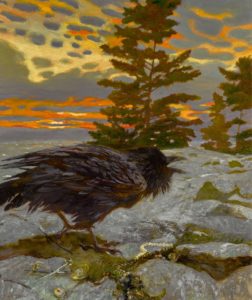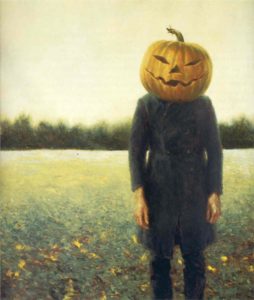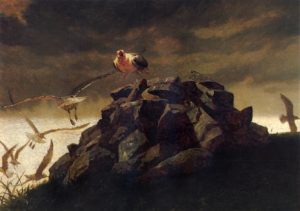Dear Artist,
American writer Rumaan Alam, in a recent interview, revealed that he enjoys writing about other people’s books. He says it’s a way of staying engaged in literature while not thinking about his own work. Alam focuses on writers he believes are better than him — he says it keeps him sharp. As a self-proclaimed binge reader, Alam escapes from his own writing while also nourishing it by throwing himself into the work of another. He calls this practice the “input-output proposition.”
“It’s important to have other pursuits beyond my own fiction — to have a thing that I can do that enriches my understanding of the world instead of just about my own invented worlds,” he says. “I really enjoy writing about books, and sometimes I write about music and film.” In the input-output proposition, Alam says it’s difficult to get to the point of output if you haven’t had any input. “A tether or a perspective of what’s happening in the world that has to do with other people’s work is really useful.”
“If you want to be a writer,” wrote Stephen King, “you must do two things above all others: read a lot and write a lot.” In my own experience, I’ve never heard of a writer who wasn’t a reader. In painting, artists trade in a primal language ripe for derivation, influence and even pastiche. Painters run the gamut of how much input they elect to receive in the midst of their own art making. Lifelong learners, it seems, grab at images, technique, workshops, reading, exhibitions and the close study of how others are making things, and risk never finding their own path. On the other end of the spectrum are the autocrats and isolationists — artists who thrive in the vacuum of their own imaginations, their hermitages shielding them from outside influence, all in an effort to create something wholly original, or perhaps to protect them from their own mediocrity. Most of us, I suspect, are somewhere in between — guarding the fiefdoms of our weak and strong ideas and aware, always in our periphery, of the methods and cares of our ancestors and peers. All the while, we must ultimately sail solo across the open ocean of our own creative discoveries. Painters, like writers, in the end, have to go it alone. And yet, in the expedition, we have never been the only ones.
Sincerely,
Sara
PS: “Writing takes gall. I like to think that’s true even for writers with several books under their belt, writers who have been doing it for years. It takes something – guts, gumption, self-delusion – to ask for a reader’s time when we all know there’s nothing new under the sun; that it’s all been said, or written, before.” (Rumaan Alam)
Esoterica: Ideas, the stories we tell and the dramas unfolding within all of us come from everywhere and nowhere. The execution of ideas comes from work. Both the singular, uninfluenced stream of a full-force gale and the polyphony of crosswinds can fill your sails. How does an artist of any medium draw from an infinite diaspora of the excellent work of others and then pour forth an original and meaningful voice of their own? The answer is in the second half of the proposition. Input is easy. Output is a bloody slog through derivation, mimicry, false starts, adulation, expressionless technical proficiency, rule learning and breaking, invention and ultimately advancing an art form towards revolution.
Begin today. The next time you cruise your eyes across the work of another and try to articulate what you see, you will also come armed with information you’ve discovered alone in your own room. It will tether you to them, offer its perspective and as with Alam, it will keep you sharp.
Have you considered a Premium Artist Listing? With each letter, an artist is featured at the bottom of this page. The Premium Artist Listings are a means of connecting artist subscribers through their work. Proceeds from each listing contribute to the production of The Painter’s Keys.
“Writer’s block is a fiction.” (Rumaan Alam)
Featured Artist
My aim as a painter is to bring to life a slice of the world as I experience it. Light, color and form are my vocabulary.








8 Comments
Very well written comparing the art of writing and painting. Yes we artists always like to see the works of other artists like a child sitting near the window and watching out side moving landscape.
Yes, as a musician I can say that musicians definitely listen to other musicians! Of course, everybody listens to music. But I think in some ways we—musicians– listen differently. We might be listening (or watching live music) for creative input, inspiration, ideas for new ways of doing things. But one thing we can rarely do with ease is listen, as many do, to music for a backdrop/background, or when trying to go to sleep. For me personally, this is because I have a hard time not paying attention to music.
In today’s world, ‘background” music is ubiquitous–in restaurants, in stores while shopping, even when getting ready for your airplane to take off! This bothers me because I know that musical taste is SUBJECTIVE, dependent on several things–the mood, the setting (for instance, Italian opera in an Italian restaurant is okay with me, but I would never choose it at home), and most of all, the listener’s preference and state of mind at the moment. I’ve become more aware of this in my job, playing music for patients in a hospital. I focus on the musical preferences of the patient and then, narrowing it down, try to discover what might work best for them according to that particular moment in that particular day. With music, I do think we all do that for ourselves.
Yes. Actually I was so blown away by Frankenthaler’s poured-on-plywood-paintings-turned-into-woodcuts last week that I’m going to mess around with poured acrylics. A vast leap from my usual figurative-type oils and watercolors!
A profound comparison of how creativity is
Influenced by memory and surroundings.
A struggle always exists to create an original
form and freshness. Hoping that your words
or your visual representation will be
Perceived as new.
If you want to win the race, don’t look over your shoulder
As a multi-disciplinary artist, I agree whole-heartedly with this piece on how not only creating, but reading, observing, etc. other “artists”, feeds and influences how we visual artists create. After a fifty-year career as, primarily, a high realist oil painter–but straying sometimes into the abstract–I have used my skills as an arts journalist (I’ve profiled over 250 artists for local media over the decades) and several self-published books, I have just published a 444 page autobiography that called on all my skills and influences to create. And at 72, I consider it simply another beginning for the next phase of my career.
Looking at other people’s art is a way of affirming my own vision.
Funny how life goes. Sara, in this Letter you write that “life long learners, it seems, grab at images, technique, workshops, reading, exhibitions and the close study of how others are making things, and risk never finding their own path.” Today I happened upon such an unexpected ‘close study’ during an unexpected visit to a local art gallery. The artist was Serge Dubé: https://sergedube.com/ It was fascinating to watch him ‘pour’ fully saturated acrylics onto canvas. What was most amazing is that he makes/mixes all of his paints ‘from scratch’. While I will never make my own paint, I did learn a few techniques from Mr. Dubé that I would like to try on my own canvases, even though I paint only in oils. I don’t know about finding my own path, but I do know that the journey to wherever is amazing as well as fun. In spades!!! And I DO look over my shoulder, at the same time as ‘ultimately sailing solo’.
Happy Canadian Thanksgiving and stay well.
Verna